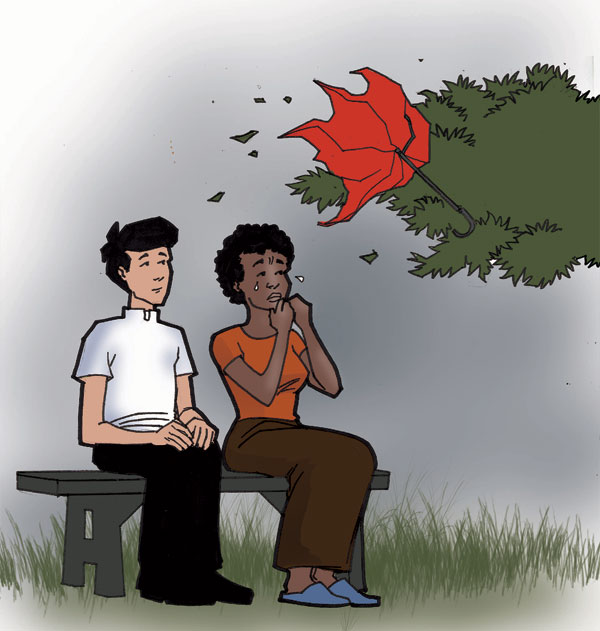Misyon Online - March-April 2011
Pulong ng Editor
My Three ‘Gs’: God’s Gracious Gifts
By Nardelita ‘Nards’ Manangan
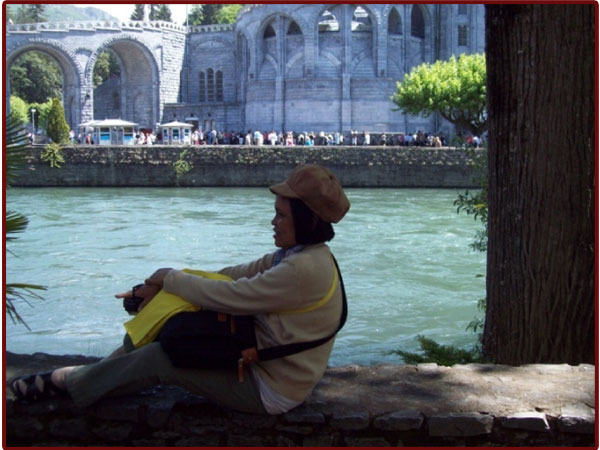 The author, from Bacolod City, is Coordinator of the Center for Integrated Faith Formation (CIFF), a project of the Catechetical Center of Colegio San Agustin-Bacolod.
The author, from Bacolod City, is Coordinator of the Center for Integrated Faith Formation (CIFF), a project of the Catechetical Center of Colegio San Agustin-Bacolod.
Ten years ago I planned to go to Rome and Malta to see my two nun sisters, Marline and Gilda, Franciscan Sisters of the Sacred Hearts, to see what life was like for them. Being their elder sister, I was like their second mother.
Fire in My Heart
By Gloria S. Canama
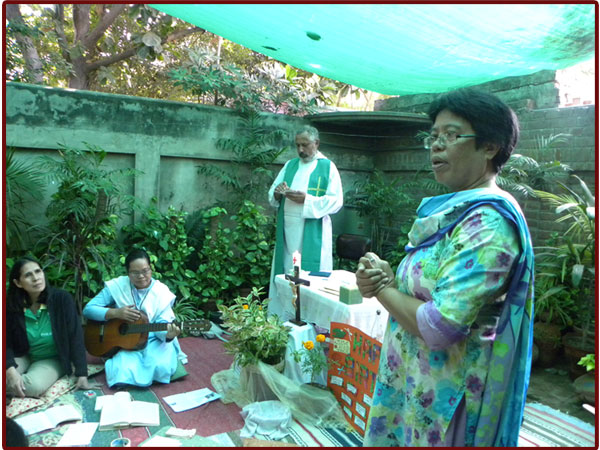 Gloria S. Canama, from Tangub City, Misamis Occidental, was a member of the
first group of Filipino Columban Lay Missionaries to go overseas, to Pakistan in
1991.
Gloria S. Canama, from Tangub City, Misamis Occidental, was a member of the
first group of Filipino Columban Lay Missionaries to go overseas, to Pakistan in
1991.
‘The fire which is in the sun, the fire which is in the earth,
that fire is in my own heart.’ Upanishad
My childhood dream was always to be a religious sister. The seed must have been sown by the Columban missionaries, Sisters and priests, who were my educators and friends from my early years. I was baptized by the late Columban Fr Paul Cooney in St Michael’s Parish, Tangub City, Misamis Occidental.
Thirty Days Alone with God
By Martin Koroiciri
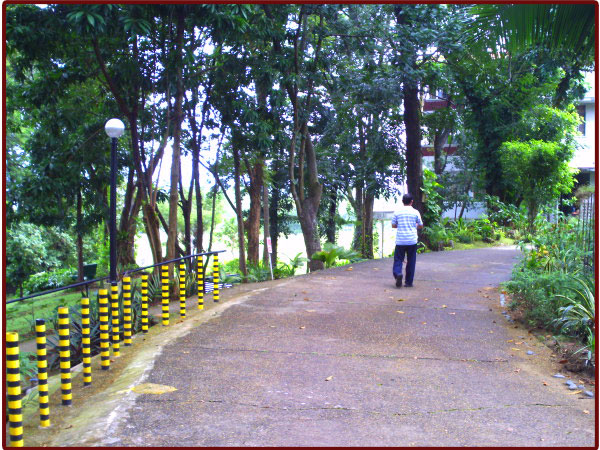 The author is a Columban seminarian from Fiji doing his spiritual
formation year in Cubao, Quezon City. Here he shares something of his Thirty-Day
Retreat, following the Exercises of St Ignatius, at the Jesuit Retreat House,
Novaliches, Quezon City, last October-November.
The author is a Columban seminarian from Fiji doing his spiritual
formation year in Cubao, Quezon City. Here he shares something of his Thirty-Day
Retreat, following the Exercises of St Ignatius, at the Jesuit Retreat House,
Novaliches, Quezon City, last October-November.
They say that prayer is our conversation with God. If there was ever a phobia in my life, it was of prayer, one of seeing the reality of myself as I am, of seeing my imperfections and accepting them. On this particular journey of prayer I faced my fear.
Ten Things I’ve Learned
By Maira San Juan
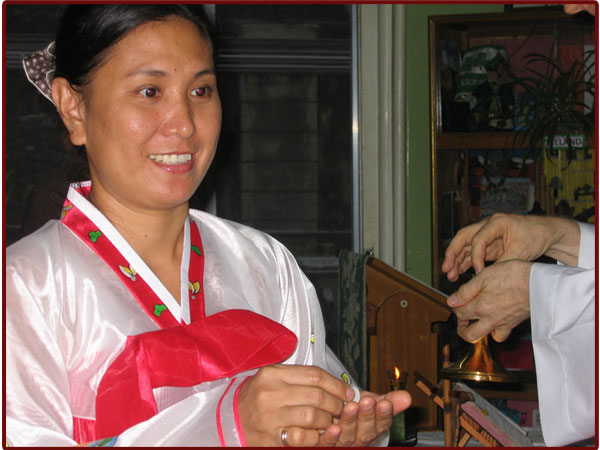 On 10 August Maira renewed her commitment as a Columban Lay Missionary and has since returned to Korea.
On 10 August Maira renewed her commitment as a Columban Lay Missionary and has since returned to Korea.
When I said ‘Yes’ to the mission, I agreed to be an instrument of God’s love to His people. This is easy to say but not easy to live by. When insecurities arrived at my doorstep, I was confused and started to ask myself ‘Why am I here in mission?’

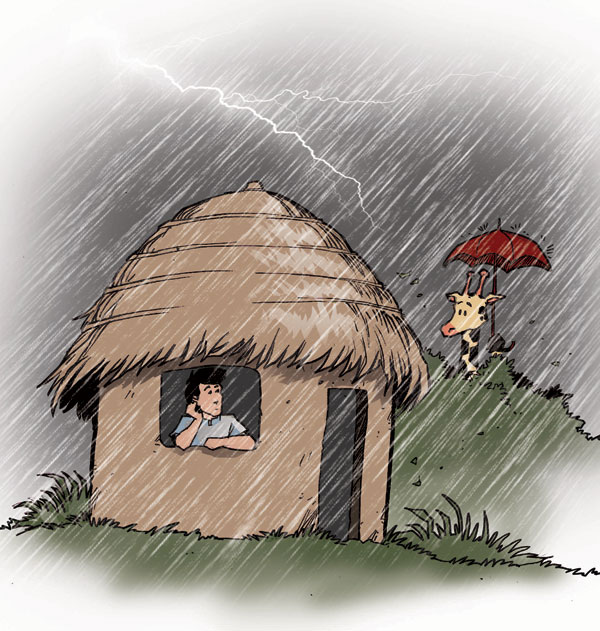 During lashing rain and stormy winds at Essuom-Manya village in Eastern
Ghana, the owner of the house hollered at me to close my door but I refused. I
kept it wide open instead for a practical reason: if the mud house collapsed, I
could easily jump out. It is a common happening here for mud houses to collapse
with people trapped and buried inside.
During lashing rain and stormy winds at Essuom-Manya village in Eastern
Ghana, the owner of the house hollered at me to close my door but I refused. I
kept it wide open instead for a practical reason: if the mud house collapsed, I
could easily jump out. It is a common happening here for mud houses to collapse
with people trapped and buried inside.
For your comments, please visit Misyon Forum.
Pulong ng Editor
By Fr Sean Coyle
[With a little help from the neighbor's dog!]
Father Joeker
By Fr Joseph Panabang SVD
During lashing rain and stormy winds at Essuom-Manya village in Eastern Ghana, the owner of the house hollered at me to close my door but I refused. I kept it wide open instead for a practical reason: if the mud house collapsed, I could easily jump out. It is a common happening here for mud houses to collapse with people trapped and buried inside.
Every year we go on the Krobo Mountain pilgrimage near Agomanya, Eastern Ghana. Confession is held in the open. After the confession of one young lady, the wind suddenly blew away the big silver umbrella I was using. The young lady was about to run for it when I held her hand and said, ‘Just watch!’ Luckily the umbrella got entangled in the branches of the tree opposite us. Grabbing a golden opportunity, I started, ‘You see, you are just like that umbrella, easily blown by the wind of pleasure.’ She looked at me in shock and burst into tears. Firmly I commanded, ‘Now, go and pick it up!’ As she gave back the umbrella while wiping her tears, I continued with fire, ‘Confession is exactly like that: picking yourself up again. Now, go and sin no more.’ I could not but imitate the Master. Never before did I see such a remorseful face with dogged determination to change indeed.

During our co-workers’ party on 19 December 2008 at the bishop’s residence in Koforidua, I was collecting left-over bones. Reaching our bishop’s table, I opened my black bag and begged, ‘Anything for the poor and the needy?’ At once Bishop Joseph Kwaku Afrifah-Agyekum put his hand into his pocket to give me some money when I clarified, ‘No, Monsignor, I mean bones for my dog.’ He was bubbling with laughter.
After Mass in Akumerso-West village in Asesewa Parish, Eastern Ghana, we went to pray for the newly born twins of one of our members. When I asked about their names before praying, I was told, ‘Mary and Abraham.’ ‘What a combination’, I kept musing to myself. ‘Why not Mary and Joseph?’
Fire In My Heart
By Gloria S. Canama
Gloria S. Canama, from Tangub City, Misamis Occidental, was a member of the
first group of Filipino Columban Lay Missionaries to go overseas, to Pakistan in
1991.
‘The fire which is in the sun, the fire which is in the earth,
that fire is in my own heart.’ Upanishad
My childhood dream was always to be a religious sister. The seed must have been sown by the Columban missionaries, Sisters and priests, who were my educators and friends from my early years. I was baptized by the late Columban Fr Paul Cooney in St Michael’s Parish, Tangub City, Misamis Occidental.

Gloria during Filcom mass, Fr Abid, Pakistani OFMCap main celebrant,
Sr Jean, Filipina Medical Mission Sister -guitarist
I tried to follow my childhood dream and joined the Daughters of the Assumption in Davao City two years after I graduated from college. I am the eldest of the family and my five siblings were still studying with limited financial resources. My mother’s strong resistance and the expected cultural family obligation didn’t stop me from leaving home to answer God’s call. I was happy and always grateful for my life with the Sisters, but it wasn’t for me. After two years, I made the difficult decision to leave. I spent the long hours on the bus journey back home crying and crying. I was fighting with God whom I felt had abandoned me. Amazingly, when the tears and strong emotions subsided, there was peace within me. Was it a similar experience to that of the apostles when Jesus calmed the storm? There was this inner knowing of Jesus very present and in pain with me as I left the community I had come to love. In my life’s journey I always go back to that faith experience of God’s abiding presence and assuring love in my moment of desolation and confusion.
There were more years of searching for God’s will for me, of how to respond to the persistent call within, of how to live a meaningful way of life. The Spirit who kept the fire burning in my whole being eventually led me to the Philippine Catholic Lay Missionaries (PCLM), the pioneering lay missionary group founded by the Maryknoll Fathers and Brothers. In May 1986 I again left my family and my teaching job. This time there was no turning back.
My first assignment was in Cuyapo, Nueva Ecija, for a year, a mission of presence and friendship, my first cultural encounter with Ilocanos. They gifted me with a very warm welcome and generous hospitality. Eventually, my wish to be assigned to Mindanao was granted, to Mother of Perpetual Help, the Redemptorist parish in Davao City. I saw those two years as stretching my creativity and the blossoming of gifts and potentials I never thought I had. It was a challenging time in building and strengthening Basic Christian Communities in urban areas with active lay participation in organizing and decision-making. This experience affirmed and confirmed my lay missionary vocation. I continued to savor and to be enriched with the gifts of friendship and the sharing of personal and community transformations even long after I had left the parish. Since then, I have lived and offered myself as a lay missionary, which is my act of gratitude to the Source of all Life. Years with PCLM affirmed and strengthened my lay missionary vocation. By baptism I am called to follow and participate in the mission of Jesus. It was also my baptism of fire. I literally crossed rivers, seas and mountains, ate the same simple meals for days, had nothing extra to buy Christmas gifts on for my family. My cup was overflowing. I received more than I’d given. I had found my pearl of great price. I had found a meaningful way of life and the fire within kept on burning.
In 1990 I joined the Columban Lay Mission (CLM). Pilar Tilos, a public school teacher from Hinobaan, Negros Occidental, Emma Pabera, a public school principal from Candoni, Negros Occidental, and I formed ‘RP 1’, now ‘PH 1’, the first lay missionary (LM) team from the Philippines. Why the Columbans? Partly, it was because of a special affinity with them. Not only had they been significant in my life formation, but the Columbans I knew deeply inspired me by their commitment and way of mission, especially their option to be with the poor, their passion for justice and the care of the earth. This resonated deeply with my own passion and commitment in life.
We arrived in Lahore, Pakistan, on Mission Sunday, October 1990. It was one of those synchronistic moments confirming my ‘Yes’. When we experienced difficulties and doubted our decisions, the three of us found it helpful to remember why we came. Being on mission is a gift from God, our ‘Magnificat’ (Lk 1:46-55) in practice. All three of us had long connections with Columban missionaries as friends and mentors. Now as Columban lay missionaries we joined them as partners, sharing Columban life and mission and witnessing to a new way of being church. Still, I questioned God. My ‘Yes’ was to life on mission as a lay woman but only in the Philippines, preferably in Mindanao where I come from. How could I leave home for three years? Why Pakistan when there are Columban missions in other countries? In hindsight, it was a blessing I didn’t know beforehand that Columbans were sent on cross-cultural mission. It was a blessing in disguise that I wasn’t to know beforehand the many restrictions and difficulties we would experience in Pakistan, especially as single women.
It is over twenty years now since I first set foot in the ‘Land of the Pure’. My first years on mission were purifying. I went with excitement and confidence. ‘I am a woman of experience. I’ve brought with me my faith, my lived experiences of working to earn a living and my voluntary Christian community involvement. Moreover, I know the Columbans!’ Learning the language alone was like being back in first grade, struggling and getting excited when I was able to read the word, ‘Lahore’, in Urdu script. My first big difficulty was the many ‘don’ts’ in the culture for women, myself included. What I considered a simple piece of cloth to cover my head was a cultural symbol of whether I was a good woman or not. The late Archbishop Armando Trindade of Lahore, on our first courtesy call to him asked us, ‘What are you three women doing here in Pakistan? How can you travel on your own in a very male-dominated society? How do you hope to empower Pakistani women?’ We didn’t have the answers and honestly said so to the Archbishop with the assurance that we’d share with him our mission experiences. We did and in the process gained his trust and support.
While on mission in my own home country, I was working closely with community leaders, men and women alike. In Pakistan I found myself in the midst of women sharing their deep aspirations to be treated with dignity and justice. My years in the Columban parish of Sheikhupura were very meaningful and fulfilling, an experience of Jesus’ words ‘I have come that you may have life, life to the full’. I left the parish over ten years ago now, yet I continue to be enriched by the continued friendship with some families there and the countless life-giving mission moments. It is a lasting gift of mission, a living well where I continue to draw the water of joy, nurturance, strength and hope.
On the other hand, I continue to share the pain of my women friends still carrying the multiple burdens of being women and of being poor. Many times I wonder if my presence, my journey with them had made a difference. Razia always assured me that I did have an impact on their lives. Many of them have educated not only their sons but also their daughters. Razia’s own daughter is now teaching with her in a village school for the children of brick kiln workers.
Joining the Columbans was a gift and a privilege but not without cost. Partnership in mission, especially 20 years ago, was more an ideal, a dream. It took a lot to change attitudes, to be seriously valued as laity on mission and to be integrated in the Columban life as partners in mission. Early on, LMs were often asked, ‘What do you do on mission?’ There was no easy answer as many of us, if not all, joined with no blueprints except the faith and commitment of disciples to actively participate in the mission of Jesus.
Sometimes the light within seemed to be flickering, dimming as I struggled to find seeds of hope and meaning in chaotic, worsening situations, locally and globally. A quote from Clarissa Pinkola Estes resonates with my own experience, ‘Struggling souls catch light from other souls who are fully lit and willing to show it.’ It was sheer joy to be with Shaina, my five-year-old friend who called herself ‘Madam’. Her laughter was infectious and her gift, a pair of socks, was priceless. It was a precious gift to be part of their lives even as I struggled with my helplessness. I can partly identify with St Paul who went through many trying moments in his missionary journey. I experienced sickness, the sudden deaths of Pilar, Fr Pat McCaffrey and Fr Tanvir O’Hanlon, armed robbery in the Columban house, deportation from Karachi airport and the ‘given’ challenges of just by being here as a woman, lay, part of the minority Christian community in an Islamic country that has been fighting against terrorism, violence, intolerance and the many forms of poverty and injustice.
When I almost gave up this CLM journey, I realized that the cost of continuing was nothing compared to the gifts I had been lavishly blessed with. I highly value this partnership, this sharing of Columban life and mission. It is indeed a pearl of great price to be part of peoples’ lives - Pakistanis, Filipino migrants in Lahore and the whole community of life.
For the past five years I have worked full-time with the Columban mission of Justice and Peace and Integrity of Creation (JPIC) focusing on ecological awareness and our ecological calling as members of the earth community. We had a strong JPIC team in Lahore, with Columban Fr Tanvir (Tommy) O’Hanlon and Pakistani layman Aqif Shezad. Slowly, we were gaining momentum with more positive responses from different groups, including the Conference of Religious Leaders. The team’s energy and creativity were at their height. My own immersion with the story of the universe, tilling and caring an organic garden, being inspired by the living witnesses of individuals and groups caring for Mother Earth, these and daily encounters with life made the fire within flare forth.
And then the untimely death of Father Tanvir on 6 June 2010. His death was just over two weeks after another great Columban missionary in Lahore, Fr Pat McCaffrey, had died of a heart attack. The shock and grief were shared by many. Father Tanvir had been a very close companion and partner in mission all my years in Pakistan and his death pained me to the core. [Editor’s note: Father Tanvir had spent his early years as a missionary in the Diocese of Ozamiz, Philippines, where Gloria is from.]
Two months later, I got news from home that both my parents were in hospital. How long would I be tested? How could I bear all this? I cried to my God in the depths of my being. I couldn’t make sense of the recent happenings. Was it time to go home for good and be with my ageing parents? Five years ago I wrote in my journal, ‘I was crying most of the afternoon and night. I woke up the following morning feeling that I’d risen.’
This is still true for me now, even more deeply. In my grief, concern for my ageing parents and my own share of insecurity, there’s peace, courage, hope and gratitude. All is grace. I’m not alone on the journey and never have been, with my family, the Columbans and the widening circle of co-creator friends with the earth community. It’s a privilege to be involved in ministries that I love and very happy to initiate, to be part of creative, relevant responses to changing missionary challenges. There is this inner knowing that there is always enough cosmic grace not only to continue but to thrive and glow on my missionary journey. ‘Only in burning itself does a candle give light’. May my life be always an offering of love and gratitude in faithfulness to the God who called me from my mother’s womb, with fire and energy from the primordial flaring forth of the universe.
You may email the author at gscanama@yahoo.com
For comments, please visit our Forum.
Our Hideaway
By Erl Dylan J. Tabaco
The author is from Cagayan de Oro and is a Columban seminarian.
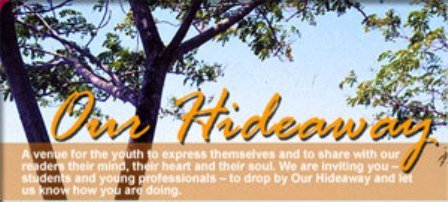
As I packed my things for a one-week vacation, I felt very excited because the places we were going to were new to me. Aside from it, I could relax after all the hard work of the school year. It was past seven in the morning when we finally reached our first destination, seven hours by bus from Manila, Banaue, Ifugao. Famous for its mud-walled rice terraces, it engaged my attention. As I was standing in front of that magnificent view, the sun’s rays illuminating the sky reminded me of a beautiful passage in the Bible. Reflecting on the magnificent scenery, I kept wondering about the beauty of God’s creation. It was a dream come true for me because before I had seen the rice terraces only in photos and movies.

Erl and Au Luceno
We went on a long walk and I was really touched by our bonding and camaraderie. Some of us were afraid to cross from one place to another. For me this was the most challenging part of our journey. We overcame our fear by encouraging and supporting each other. As we went back to the rest-house for dinner, we talked about our beautiful experience. Our journey that day was like our vocation journey.
As the long day of trekking ended, the serenity of the evening brought peaceful feelings to my soul. I felt a sweet, soft breeze across my face. Watching the moonlight convinced me that the beauty I saw and sensed in the natural world was one of the most important pieces of evidence of God’s divine nature. We were in an awesome place where nature could heal and cheer and give strength to body and soul alike.
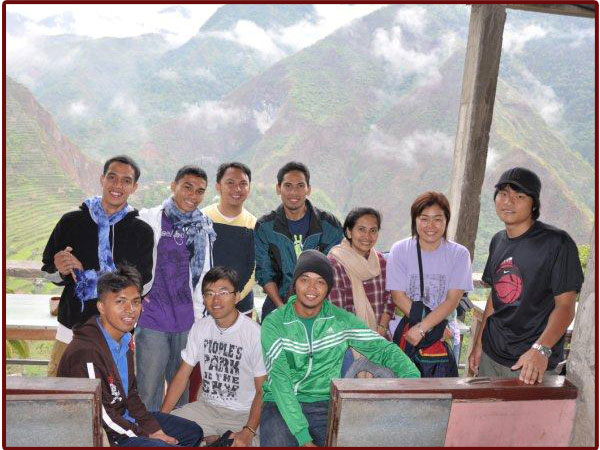
Columban Seminarians with Columban Lay Missionaries Kyung-ja and Au
Our next destination was Sagada, Mountain Province, another famous place in the Cordillera region. I really enjoyed the weather, totally different from that in Manila. We went inside a cave where there were muddy and slippery rocks making our visit more invigorating and thrilling. We spent only one night in Sagada after which we proceeded to our final destination, Baguio City.
From Wednesday of Holy Week till Holy Saturday, we went to different churches for the Holy Week ceremonies and visited significant places, parks and monuments in the city. It was the first time for all of us to visit the Columban house in Baguio.
Spending time with myself during these days reminded me of my apostolate in Holy Rosary, Agusan, the Columban parish in Cagayan de Oro City, three years ago while I was still working with the youth there. I might have been a stranger in Baguio but experience-wise it was comparable to my own parish. Although I am no longer handling them, the spirit of the young people whom I used to serve before I entered the seminary remains in my heart. They may be at a distance but I believe in my heart that we meet in our prayer.
I attended the Mass of the Lord’s Supper in the Cathedral on Holy Thursday afternoon and was deeply moved after the Gospel when the parish priest played the role of Jesus and washed the feet of twelve persons from different walks of life representing the Apostles. Among them were a farmer, a politician, a teacher, a policeman and a houseboy. What touched me was the symbolism of the drama. It reminded me again that God called me not because of what I have but in spite of my frailties and unworthiness. I reflected on something I read: ‘There is no perfect vocation, only a perfect intention’. God calls us as we really are no matter what stage of life we are in.
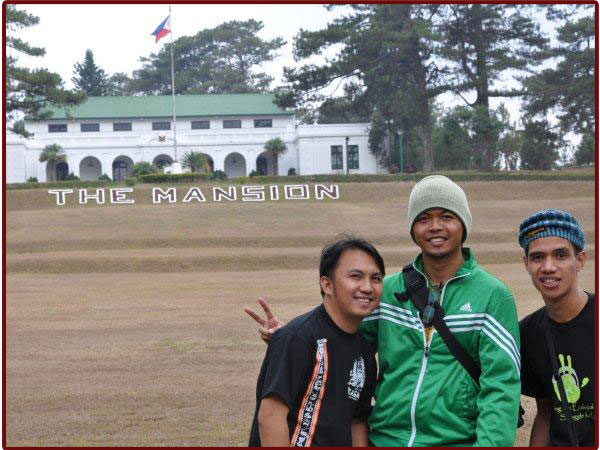
Erl, Kurt and Charlie at the Mansion
I really liked Baguio because of its cold weather, tasty food and especially the hospitality of Kuya Alex and the staff in our house.
The whole week’s experience was breathtaking and memorable. I was able to spend ample time with my fellow seminarians and with myself as I kept on discerning about my calling. It was a place also for me to look at myself and my relationship with God.
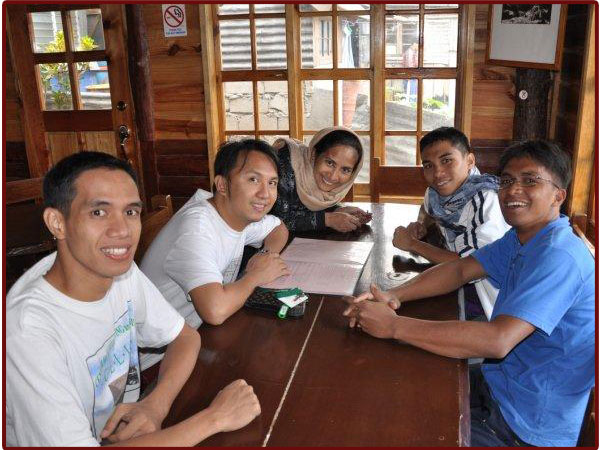
Resting after a long walk
Our days in the Mountain Province are now a memory but the experience of our visit there will always remain in my heart. As my Holy Week vacation ended, another step had to be made as I continued my life’s journey. May the Lord continue to inspire me and strengthen my vocation in the days to come.
You may email Erl at
earl.dylan@yahoo.com
Ten Things I’ve Learned
By Maira San Juan
On 10 August Maira renewed her commitment as a Columban Lay Missionary (photo) and has since returned to Korea.
1. When I said ‘Yes’ to the mission, I agreed to be an instrument of God’s love to His people. This is easy to say but not easy to live by. When insecurities arrived at my doorstep, I was confused and started to ask myself ‘Why am I here in mission?’ Then when compliments sat on my lap and I became comfortable with their presence. I started to think ‘I can do many things by myself’. When familiarity and accomplishments touched my shoulders I started to feel ‘I’m more blessed than others’. When the word ‘missionary’ came into my head I started to think ‘I’m much better than the other people I’m journeying with’. And when I started to put many expectations on myself I sometimes forgot the reason why I said ‘Yes’.

Maira San Juan
2. When communication becomes difficult food can help. I believe every dish has a story - the way it is prepared and why it tastes so differently. It can also be a first glance at someone else’s culture and uniqueness. Food can become an icebreaker too. I remember when I first tasted and learned how to cook kimchi chigae, a popular Korean soup made with fermented cabbage and chili pepper paste, the first words I said were ‘Hmmm . . . tastes good’ and the person who served it smiled. And when I served my first kimchi chigae the first words that I heard were ‘How did you prepare this?’ And that was the beginning of the conversation.
3. I cannot choose the people who will let me into their lives. I can only receive what they are capable of giving and be thankful it happened. It’s a humbling experience to be a living witness and to be able to share my life with another person. Building a relationship is not an easy task especially because of culture and language differences. Sometimes miscommunications arise making both parties frustrated and hurt. We have a choice. We either get out of the relationship, build a block or wall, or stay in the relationship, willing to take risks.
4. It is essential to sit with friends, talk about anything under the sun, share each other’s experiences, laugh and relax together. I’m at my best when I’m relaxed and when my life is balanced. One challenge in mission is to find balance in everyday life. Nothing can buy me relaxation and balance but friends are a good source.
5. It’s not about what I can say but about how much I listen. This really matters. I can say many things but these words mean nothing if I don’t listen to what I’m saying. The words become empty because I don’t mean them. And when other people express themselves through words, it becomes noise to me because it’s ‘nonsense’. Not because of the words they say but because I just hear them without really listening.
6. What is life without going back to the basics . . . breathing. Communion with nature gives me peace of mind because it helps me to breathe deeply. This leads me to sense my inner strength because I’m in a space where all my senses are relaxed. Communion with God is essential in my everyday life. It helps me find meaning with what I’m doing. My relationship with God is as important as breathing.
7. My weaknesses are important gifts that I can offer . . . and others’ weaknesses are gifts that I can receive. It’s easy to relate with persons who are not afraid to show they have flaws because honesty deepens relationships. Perhaps I have weaknesses that can be someone else’s inspiration and others have weaknesses that can give me strength.
8. There are some things that I cannot bring back anymore. I cannot bring back the time when my nephews and nieces were growing up or time with my family. Because I have been away from them a long while, I feel I do not know them anymore and that they can continue on with their lives without me. This is a reality which has given me much pain but has been essential for my growth.
9. When doubts and questions arise within me . . . sometimes the best thing for me to do is just nothing. Having doubts and questions might be an overwhelming experience. Sometimes it can make me restless or rigid especially when I least expect it. I realize there are some questions which don’t need an answer, doubts which don’t need any response. I just need to recognize them.
10. I can learn many things through experience. I have a conviction in what I believe because I have experienced a situation where I almost lost my faith. I can learn the true meaning of joyfulness because I have experienced being almost ‘drowned’ in loneliness. I can understand the word responsibility because I have experienced being out of control and dependent. Acceptance and letting go are possible because I have experienced holding on tight. The word love is more meaningful now because I have experienced being hurt. And the words service and mission are not merely words anymore because I have experienced being in need and witnessing God’s love. And because of these I am more aware that I’m just an instrument of the greatest scheme of life, and that I am grateful. Most of all I have learned to say ‘THANK YOU!’
You may email the author at mesaj85@yahoo.com
Peace By Peace

Path Of Peace
Peace is an easy path to tread
Peace is where our fears are mislaid
Peace is beginning to restore
Peace for each man, woman and child
Peace for the troubled streets gone wild
Peace is for the old and the young
Peace in the end will overcome
Peace builds trust into a lifestyle
Peace is a friendly open hand
Peace is a place to understand
Peace in the end will overcome
Peace is for the old and the young
Peace is a legacy to leave
Peace is when we don't have to grieve
Peace is an end to all the hate
Peace is why we negotiate
Peace for all the victims of war
Paul McCann (Born in Belfast, Northern Ireland, 10 March 1956; has lived in Australia for many years.) Source of poem.

Peace is not just the absence of war. Like a cathedral, peace must be constructed patiently and with unshakable faith.
Pope John Paul II
The Holy Spirit writes no more gospels except in our hearts. All we do from moment to moment is live this new gospel of the Holy Spirit. We, if we are holy, are the paper; our sufferings and our actions are the ink. The workings of the Holy Spirit are his pen, and with it he writes a living gospel.
Fr Jean Pierre de Caussade SJ (1675-1751)
To be at one with God is to be at peace ... peace is to be found only within, and unless one finds it there he will never find it at all. Peace lies not in the external world. It lies within one's own soul.
Ralph Waldo Trine (1866-1958)
Lead me from death to life, from falsehood to truth; Lead me from despair to hope, from fear to trust; Lead me from hate to love, from war to peace; Let peace fill our heart, our world, our universe.

Satish Kumar
So many people walk around with a meaningless life. They seem half-asleep, even when they're busy doing things they think are important. This is because they're chasing the wrong things. The way you get meaning into your life is to devote yourself to loving others, devote yourself to your community around you, and devote yourself to creating something that gives you purpose and meaning.
Tuesdays With Morrie, Mitchel David ‘Mitch’ Albom (born 23 May 1958)
‘I am the Light and you are the lamp,
I, the River, and you the thirsty land.
To you, your sighs have drawn my Heart
And ever beneath you is my Hand;
And when you weep, it must be
My Arms that encompass you.’
Pathways to God, Fr John Henaghan MSSC(1881-1945).
 Fr Heneghan, a priest of the Archdiocese of Tuam, Ireland, was one of the first
Columbans. He was killed by the Japanese on 10 February 1945, one of the five
Columban ‘Malate Martyrs’ and one of more than 100,000 who died during the
Battle of Manila, 3 February – 3 March 1945.
Fr Heneghan, a priest of the Archdiocese of Tuam, Ireland, was one of the first
Columbans. He was killed by the Japanese on 10 February 1945, one of the five
Columban ‘Malate Martyrs’ and one of more than 100,000 who died during the
Battle of Manila, 3 February – 3 March 1945.

photo of Manila, May 1845
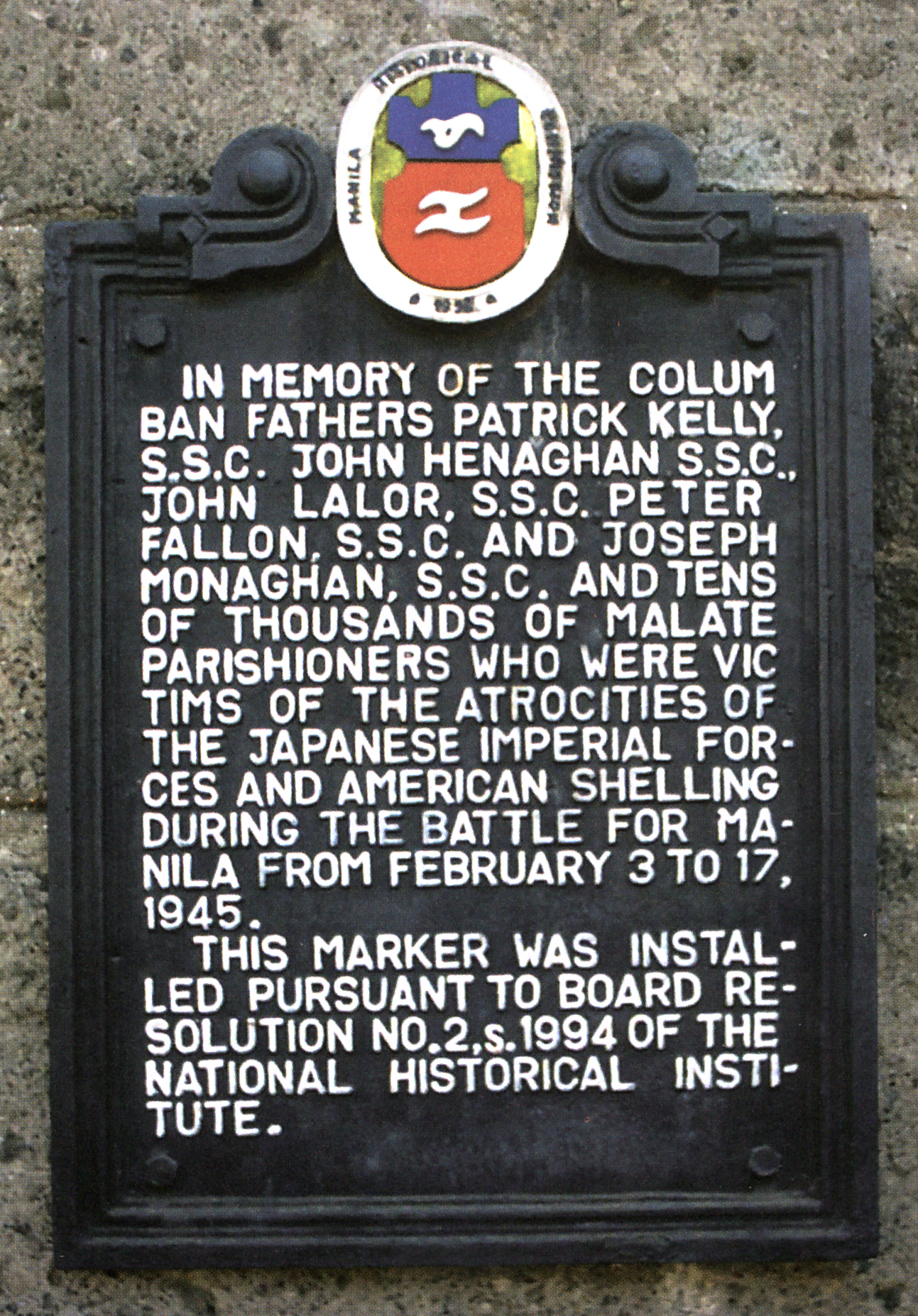
Memorial to Columbans who died in Malate
